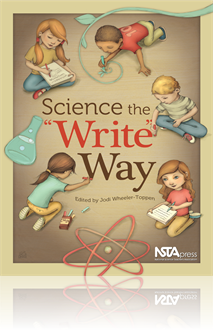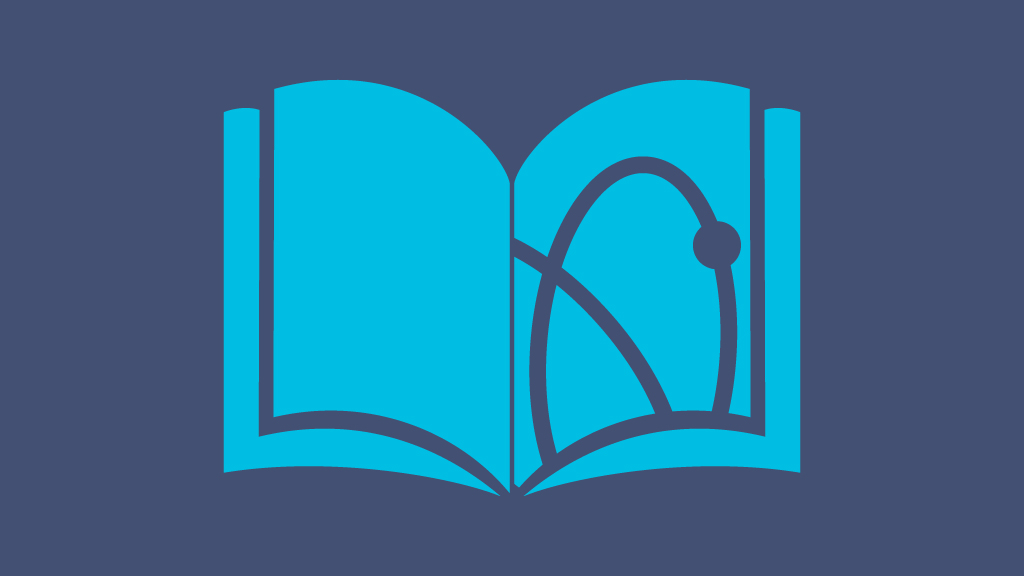All Book Chapters
Book Chapter
From Speaking to Writing in the Structured English Immersion Science Classroom
In most cases, structured English immersion (SEI) has replaced bilingual and English as a second language (ESL) programs as the preferred method of educating English language learners (ELLs). As a result, science teachers need specific strategies to ...
Book Chapter
What Writing Represents What Scientists Actually Do?
This chapter addresses whether or not a report based on scientific method accurately represents what scientists do as well as what kind of writing scientists engage in that goes beyond the reporting of conclusions....
Book Chapter
The inquiry science process provides a perfect opportunity for students to practice relational meaning in language. As students design their experiments, negotiate their ideas with peers, and share their data and conclusions, they sharpen both their ...
Book Chapter
Getting Students to be Successful, Independent Investigators
Students often struggle when writing testable problems, planning valid and reliable procedures, and drawing meaningful evidence-based conclusions. To address this issue, the author created a student-centered lab handout to facilitate the inquiry proc...
Book Chapter
The ability to clearly communicate what was learned as the result of an experiment is a key component of science in general, not just science in the middle school classroom. The trick in the middle school classroom is teaching students how to write w...
Book Chapter
Science the "Write" Way: Nonfiction Writing Activities Help Students Learn Science
Learning to write well is a long process that comes through teacher modeling, instruction, practice, and feedback. Luckily, the writing process can be used to improve science learning too. This chapter describes how nonfiction writing activities help...
Book Chapter
For middle school students, writing a formal lab report can be challenging. For middle level teachers, reading students’ lab reports can be overwhelming. As a solution, why not try peer editing? By having students critique each other in a construct...
Book Chapter
Would you like your students to learn about nature and improve their observational abilities? Incorporating haiku into your curriculum can help meet these science goals and give children a positive writing experience as they learn about the world aro...
Book Chapter
A current events journal keeps students involved with the latest scientific news and helps develop their writing and analytical skills. Every week, students select a science article, summarize the article in their journals, and define new vocabulary....
Book Chapter
Extra! Extra! Learn All About It
Communication and reporting of findings to peers are important to middle school students. One way to capitalize on students’ interests and incorporate the nature of science into the science curriculum is to have students create a science-based news...
Book Chapter
Having students write and publish their own newsletters is a great way to integrate reading and writing, infuse technology, and build home-school relationships. These newsletters can be used to keep parents informed of what is being taught in class, ...
Book Chapter
The typical use of science notebooks is for students to record information as they complete an investigation, writing down their procedure, observations, data, results, graphs, and any other factual information pertaining to their experiment. The aut...
Book Chapter
A Natural Integration: Student-Created Field Guides Seamlessly Combine Science and Writing
A five-week study taught students how to write a field guide that identified the plants in a small wooded area they passed through on their way to their school playground. By creating this authentic genre of science writing, students came to understa...
Book Chapter
Richard Louv’s Last Child in the Woods (2008) added to a growing consensus to get children outside and experiencing nature. Using ideas from place-based education, the authors present a simple year-long project that brings science, nature, and ot...
Book Chapter
Are you looking for ways to effectively integrate—and assess—science and literacy learning? Try having your students create their own books! The Integrated Science Literacy Enactments (ISLE) approach to teaching and learning science is one way to...
Book Chapter
Developing writing skills along with content by incorporating hands-on science experiences and related writing lessons provides students with a purpose for writing, which makes it more meaningful to students. The Mystery Box lesson discussed in this ...
Book Chapter
Unlocking Reading Comprehension with Key Science Inquiry Skills
As secondary science teachers, we must remember that scientific literacy cannot be attained without fundamental literacy--the ability to read and comprehend textual information and write competently about the subject under study. To achieve literacy ...
Book Chapter
What do we learn from the world around us? After months of exploring various ecosystems, a third grade teacher incorporates "Nature's Advice Book", a writing tool created to assess what her students had learned and to gain insight into their ideas ab...
Book Chapter
Third-grade students display their understanding of life science concepts by creating an imaginative newspaper. This creative writing project engages students in researching, writing, and editing a newspaper based on a prairie ecosystem....
Book Chapter
Two Bad Ants, a fictional story detailing the journey of “two bad ants” that stray from their colony and choose to stay in a container full of large, white, sweet-tasking crystals (sugar)—was the catalyst for an engaging five-day study with thi...
Book Chapter
Children love seeing their work and photos of themselves at work. Make this an opportunity for an early literacy experience by creating a book about a classroom investigation. Document each step of the process with photographs and student drawings. W...
Book Chapter
One way to help students develop their writing skills is through the “key-word process.” In this method, students select key words about a topic and then use those words to build their own sentences and paragraphs. The key-word process can be exp...
Book Chapter
The communication skills of reading and writing go hand in hand with science as natural partners for fostering students’ understandings of the world. The similarities that exist between reading and writing strategies and science-process skills add ...
Book Chapter
Creative Writing and the Water Cycle
Creative writing provides one strategy for helping students combine their powers of imagination with their arsenal of knowledge. Teachers also can use creative writing exercises to assess student understanding of science content. Use the story, “Th...
Book Chapter
Tired of building a paper mâché volcano to teach about plate tectonics? Do you want to connect science and writing? Then the volcano résumé project is perfect for you. This one-week, problem-based learning (PBL) project requires students to resea...
Book Chapter
That a relatively small piece of writing such as Albert Einstein's three-page paper of relativity could be so important certainly illustrates the significance of writing to science. A science class is not complete unless it helps students learn to th...
Book Chapter
Integrated science journals provide educators with valuable insight into teaching. They allow students to reflect on how engaged they were in learning about a particular topic while also providing information about how successful the teacher was in c...
Book Chapter
Science Interactive Notebooks in the Classroom
Writing is one of the ways in which children learn in science. When students make observations and explain them in writing, they clarify and organize their thoughts and ideas. Keeping science interactive notebooks is a technique for increasing studen...
Book Chapter
Using Science Journals to Encourage All Students to Write
It seems that everyone is using science journals or notebooks lately. As middle school science teachers, the authors use science journals as a tool to enhance students' knowledge and understanding of content and reinforce students' writing skills. In...
Book Chapter
Learning Logs: Writing to Learn, Reading to Assess
Just what do children get out of inquiry? Good inquiry activities help students hone their inquiry abilities and teach them about the nature of science. Inquiry is also a way to teach science content, and teachers need to know if this instruction is ...
Book Chapter
Using Web Logs in the Science Classroom
As educators we must ask ourselves if we are meeting the needs of today’s students. The science world is adapting to our ever-changing society; are the methodology and philosophy of our educational system keeping up? In this chapter, you’ll learn...
Book Chapter
Interactive Reflective Logs: Opening Science Notebooks to Peer and Teacher Feedback
Ho do we as educators ensure that all students are given the opportunity to respond or engage students who are embarrassed to speak in front of others? The authors created an interactive reflective log (IRL) to provide teachers with an opportunity to...
Book Chapter
Students are using the tools of scientists when keeping a science notebook. To bring students’ existing ideas out for examination, the author implemented a “quick-write,” which entails asking an open-ended question and having the students write...
Book Chapter
Science journals are wonderful tools. They offer a glimpse into children’s science understandings, and they are both diagnostic and pedagogically informative to teachers. Examining and reflecting on children’s journal work lets teachers embed ass...
Book Chapter
The P.O.E.T.R.Y. of Science: a Flexible Tool for Assessing Elementary Student Science Journals
Writing about inquiry-based science experiences can provide students with opportunities to communicate their questions, observations, and reflections while expanding our instructional and assessment options as teachers. But how can teachers encourage...
Book Chapter
This Isn't English Class! Using Writing as an Assessment Tool in Science
Writing is a huge part of science. It is the way scientists communicate ideas, results, conclusions, and opinions to other scientists. Thus, the author uses writing in a number of ways to have students demonstrate knowledge and as an assessment tool....
Book Chapter
Making Thinking Visible: A Method to Encourage Science Writing in Upper Elementary Grades
Writing, in conjunction with other activities such as reading and hands-on experiences, contributes to greater critical thinking, thoughtful consideration of ideas, and better concept learning. This chapter discusses a comprehensive approach toward s...
Book Chapter
By using the writing process to explore science, students and teachers can find new ways of clarifying, revising, and consolidating knowledge. To achieve this goal, try using The Writing in Science Wheel activity described in this article. The Writin...
Book Chapter
Helping Students Write About Science Without Plagiarizing
Most students don't plagiarize just because they are lazy. Most of them simply do not know how to write about science. As teachers, we can use planning strategies to help make some of the process of writing automatic, which frees working memory to fo...
Book Chapter
Learning to Write and Writing to Learn in Science: Refutational Texts and Analytical Rubrics
Most middle school science teachers are familiar with the idea of reading and writing across the curriculum. We, as science teachers, understand that our students need time, practice, and lots of encouragement in order to learn how to read and write ...




